#Mara Branković
Explore tagged Tumblr posts
Text




Hunyadi | 1.02
#hunyadi#hunyadiedit#perioddramaedit#rise of the raven#mara branković#törőcsik franciska#mine#must a costume be historically accurate? isnt it enough to have a b0ob window?
41 notes
·
View notes
Text


This golden tiara was first worn by Princess Farya Bethlen in the seventh episode of the second season of Magnificent Century: Kösem.
Turned upside down and with some additional gold chains attached, it was worn again by Mara Branković in the sixth episode of the first season of Rise of Empires: Ottoman.
#Muhteşem Yüzyıl: Kösem#Magnificent Century Kösem#Magnificent Century Kosem#Rise of Empires: Ottoman#period drama#costume drama#historical drama#Farya Bethlen#Farya Sultan#Mara Branković#Mara Brankovic#reused jewellery#recycled jewellery
11 notes
·
View notes
Text




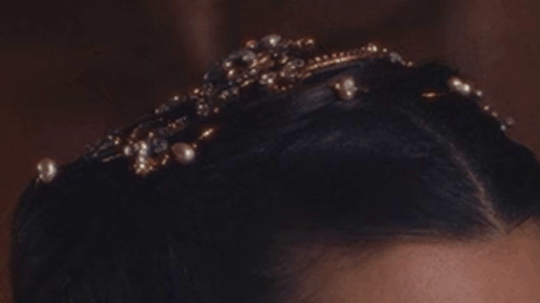

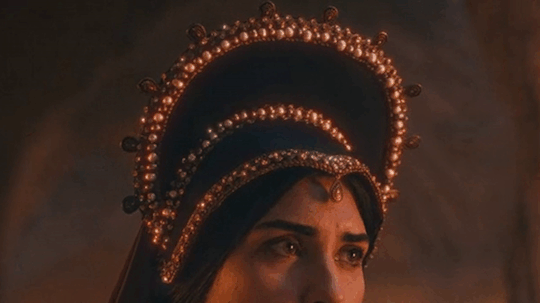
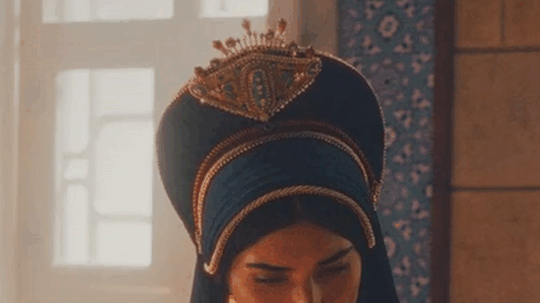
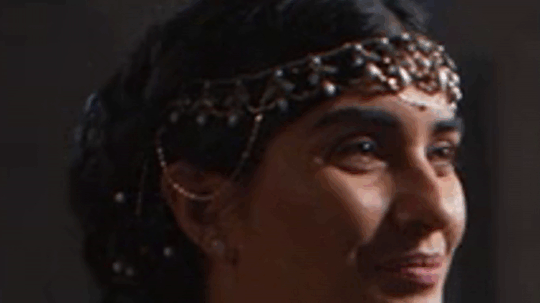

Rise of Empires: Ottoman + Headpieces
Mara Branković's headpieces.
#Rise of Empires: Ottoman#Mara Brankovic#Mara Branković#period drama#perioddramaedit#costume drama#costumesource#headpieces#1400s#15th century#hair jewellery#hats#hoods#gold#silver#white#blue#purple#black#brown#Constantinople#Istanbul#Adrianople#Edirne#Ottoman Empire#Buda#Budapest#Hungary#Smederevo#Serbia
157 notes
·
View notes
Text
LAZAREVIC SISTERS I
Princess Mara Lazarevic

Early Life
Though her date of birth is unknown, she is regarded as the eldest child of Lazar by his beloved wife Milica. The harmonious couple married in 1353, Mara was certainly born around the first years of their marriage, perhaps the following year or in the mid-1350s.
Not much is known about her early childhood, but she was certainly born in Prilepac or Novi Brdo. She most likely received the same education as her younger sisters, though she might have not received the same privileges and comfort as them.
As her father’s power and prestige grew immensely following the battle of Maritsa in 1371, he moved his capital to a new area and named it Krusevac, that same year Mara was married off, so she did not grow up in the Krusevac Fortress, or even received her education or entertainments there.
Marriage to Vuk Brankovic
In 1371, Mara married Lord Vuk Branković through a political alliance between the Lazarevics and the Brankovićs. The marriage was beneficial to Vuk and Lazar as it offered them both advantages to the other’s resources.
Nothing is known about the private relationship Mara shared with Vuk, though it must have been built on mutual understanding on equal grounds. The couple had three sons together. It is noted that by 1375, Mara had welcomed her second son Durad Branković which places Grgur Branković as the eldest son and Lazar Branković as the youngest of the trio.
In 1389, following the bloody Battle of Kosovo, Milica became regent for her 13 years old son; Prince Stefan, and Vuk Branković not only refused to ally himself with his mother-in-law’s politics -which were in favor of the Turks- but also rebelled against them.
While sealing documents, Vuk often signed his title as “Lord of Serbs and Podunavlje” when he was only recognized as “Lord Vuk,” though it seems that only he and his entourage referred to him as such. The ownership of the title “Lord of Serbs and Podunavlje” was only reserved for Prince Lazar and his successor; Prince Stefan Lazarevic. There are no documents that give any statement of the Lazarevics reaction to Vuk’s action to go by a title reserved for them only, but it must have added distance and contributed to future hatred between the two houses.
It appears that Mara stood by her husband’s ideals throughout these familial vendettas.
As Rebels
From 1389-1392 the Brankovićs resisted Ottoman rule the most compared to other Serbian dynasties, but they, unfortunately, were forced into vassalage upon the capture of Skopje. Nonetheless, Vuk refused to act as a vassal and only remained one by name. He continued his diplomatic relations with Hungary and denied any call to battle alongside the Ottomans.
As a result of these actions, Vuk was captured in 1396 following the aftermath of the Battle of Nicopolis. He passed away the following year in 1397 and in 1398 the majority of his lands were seized and given to Stefan Lazarevic through the influence of his sister-in-law; Olivera Lazarevic.
Only two towns remained under Brankovićs rule, but the conditions meant they had to remain in a vassalage to the Turks.
If the respective dynasties had disagreed before, then this caused the Brankovićs to build up hatred against the Lazarevics. Mara must have felt not only abandoned by her family but also revengeful.
Widowhood
After her husband’s unfortunate death, Mara permanently settled in Dubrovnik and started to withdraw money and hidden valuables.
In 1402, after the Battle of Ankara, Mara’s eldest son Grgur was captured on the battlefield and stayed in captivity for a short while.
In September of that year, a battle broke out near the Kosovo field between Stefan and his nephew; Durad. A battle which Stefan had won. This conflict not only created a huge gap between Mara and Stefan but also extremely worried the merchants of Dubrovnik; who only wished to trade in peace.
This war and the absence of her eldest son must have left her in great distress as in December of that same year, the people of Dubrovnik tried their best to reassure her by expressing their blessings, and that they pray to God that Grgur come to her soon.
As a result of this tension, Stefan was blamed by the Brankovićs, especially by Durad who blamed him not only for the loss of their lands but also the death of their father. Mara is noted to have supported her sons against their uncle.
Ottoman Interregnum
During the Ottoman Interregnum Mara lost two of her sons; Grgur who became a monk died under the monastery name of Maxim in 1408. Her youngest son; Lazar, was executed by Musa on July 11 or 12 of 1410 after failing to convince Durad to return his loyalty to Musa. He was killed not only a full week after the execution of his youngest uncle; Vuk Lazarevic.
Mara, who only had one son left was probably worried about her sole child and his future. For this reason, in 1412, she reached out to her youngest sister; Olivera, for help to reconcile with Stefan.
Though it is stated in Miodrag Purkovic's book “КЋЕРИ КНЕЗА ЛАЗАРА ИСТОРИЈСКА СТУДИЈА ПОГОВОР” that it was Milica who acted as a mediator for their reconciliation, she was far dead by then so it could only be Olivera.
Durad, who must have been fearing for himself by then sided with his uncle, and was warmly welcomed back into the family. Stefan trusted him enough to send him as a commander against Musa. Around 1412 or 1413, Durad and Musa battled, Durad won and Musa was later captured to be executed by his half-brother; Mehmed.
Later Life
From 1417 to 1423, Mara is mentioned in a few Dubrovnik documents about familial valuables and repayment for damages. Soon after 1423 she became a nun and took the name ‘Marima.’ After this date, not much is recorded about her or her life as a nun.
In 1425 or 1426, the childless Stefan Lazarevic proclaim his nephew; Durad, as heir.
Mara passed away in 1426, never to see her sole child become the Despot of Serbia, and regain the lands they had previously lost. There is not a single information about her cause of death, though it might been due to old age or a disease related to her age.
Issue
Grgur Branković
Durad Branković
Lazar Branković
(Sources: “КЋЕРИ КНЕЗА ЛАЗАРА ИСТОРИЈСКА СТУДИЈА ПОГОВОР” by Miodrag Purkovic, Dve srpske sultanije : Olivera Lazarevic (1373-1444) : Mara Brankovic (1418-1487) by Nikola Giljen)
#Mara Lazarevic#Serbia#Battle of Ankara#Mara Branković#Lazar of Serbia#Stefan Lazarevic#Milica Hrebeljanović#Lazar Hrebeljanović#Battle of Kosovo#history#lazarevicsisters#maralazarevic
32 notes
·
View notes
Text
Oh my God oh my God oh my God, why does “Rise of the Raven” look so incredibly disappointing. Why does Hunyadi look like a Viking warrior. Why are they turning Mara Branković into his first love who breaks his heart. Why cannot we finally be given a proper portrayal of the important events and figures of Central and Eastern Europe. 😭
#rise of the raven#i have a feeling they are trying to do something similar to rise of empires: ottoman and it's just— NOT IT#historical fiction is labeled fiction for a reason because we FICTIONALISE certain parts to fill the gaps and make it appealing#but why are they turning it into something completely else
18 notes
·
View notes
Note
hi!!!! very exited for your take on all the ladies but i also wonder if there are any ladies from ottoman side you’re exited to write about?? have a nice day? :D
Dear Anon, thank you for this Ask! I am happy to see such a nice surprise from you in my inbox (the Ottoman part of the story is a real brainrot these days skdjsdksks). I hope the reply finds you somewhere on your dash! ❤️️
I do have to admit that I do not know just how many ladies from the Ottoman side will make their appearance as I do not yet know how much of Mehmed's story I will get to write. But here are the ladies you can look forward to in the future!
Hüma Hatun. Obviously, Mehmed's mother plays an important role in his life and will hence make an appearance -- definitely implicitly through Mehmed's character, but I would also like to explicitly include her character. Essentially, this part of her Wikipedia entry sums up my plans for her and her lore: "Based on the fact that Mehmed II was fluent in the Serbian language, it was concluded that she may have been of south Slavic origin, most likely Serbian." Essentially, both Vlad and Mehmed grow up in environments in which the sense of self and one's identity is regarded as being inherited from the father, with little regard for the importance of the mother and her own identity or imprint on her children, so just like I want to show Vlad as a son of both his father and mother, I want to apply the same to Mehmed. Because the Ottoman sultans were often sons of slaves turned into concubines, this might be even more impactful.
Mara Branković (also known as Mara Hatun). Mara was an incredibly powerful woman, both in her native Serbia and the Ottoman Empire -- her influence was so crucial that to this day, she is regarded as one of the most powerful women in the 15th century. Mehmed considered her a mother figure in his life, and she even came to play a significant role in several diplomatic negotiations during his rule. What I find very interesting and worth exploring is that she disrupts the typical idea of medieval women being passive, submissive, and always forced into the shadows because she was an important political player during the rule of two sultans. She was also one of the most prominent leading members of the pro-Ottoman party in the Balkans which is also an interesting thing to explore -- what exactly creates one's sense of belonging? Is home necessarily the place you were born in? What makes you grow loyal to your own captors? (I might digress here a little but Mahmud Pasha is another character I want to include who will face the same decisions -- and, funny enough, he is Serbian as well.) She will also make an appearance in Vlad's story as she will try to influence his worldview a little, both during his hostage years and later on.
Gülbahar Hatun. The great importance of Gülbahar's character actually came to the surface while I was reading Mehmed's biography -- I learned so much about her thanks to that, and since then, she has been a crucial character in his story. Even though Mehmed despised their son Bayezid his whole life, Gülbahar remained very dear to him until his death. Although the importance of his lovers (both female and male) fluctuated and changed depending on life and its circumstances, he considered Gülbahar as something of a constant presence, the person to be his rock. This is quite interesting, especially because Gülbahar loved their son deeply (she had great influence over him) and went to Amasya with him when he became the governor, as per the Ottoman custom. What is even more interesting is that, despite slaves in the harem being made to convert to Islam, Gülbahar allegedly remained a Christian. Because I have established Radu as the second most important partner in Mehmed's life, it will be important to explore the differences in dynamics, as well as see one relationship built on love and another on fear.
Other important ladies from the Ottoman side might include Mehmed's sisters and daughter, I would also like to write a little something about his "love story" with Helena Palaiologina (he allegedly fell madly in love with her for her beauty and took her as a concubine but never touched her out of fear she might poison him). I also want to recreate his conversation with Sara Khatun who was a skilled diplomat and the mother of Uzun Hasan, the ruler of the Turkoman Aq Qoyunlu state, and served as her son's ambassador during Mehmed's siege of Trebizond. Fearing that Mehmed was planning an attack on the Aq Qoyunlu after being done with Trebizond, Uzun Hasan sent his mother (together with many noblemen and gifts) to negotiate. Their negotiation took place while climbing the Zigana Pass on foot. Sara Khatun was particularly successful in her endeavours, and the conversation was allegedly a very intriguing one for both parties.
4 notes
·
View notes
Note
En voyant un de tes reblogs sur l'empire byzantin je me demandais si tu avais vu la série Netflix sur la Chute de Constantinople?
(oui sur une des posts il y a le Constantin de la série lol)
En un mot comme en cent, c'est franchement mauvais, il y a un gros biais pour faire passer Mehmet comme un super roi conquérant trop OP avec tout plein de prophéties, mais qui passe en réalité pour un charlot, et si Constantin passe pour quelqu'un de faible entouré d'incapables et de traîtres, mais qui reste courageux jusqu'à la fin.
Je ne sais pas si les costumes ou si les décors sont censés être assez fidèles à l'époque, mais si jamais tu veux regarder quelque chose de mauvais pour en rire, ben il y a ça sur Netflix!
(Même si le rôle de la mère de Mehmet est le rôle féminin le plus intéressant dans cette série qui n'en a aucun autre, dans le sens où elle essaie de freiner les renforts de son père qui veulent rouler sur les Ottomans pendant qu'il fait le pied de grue devant Constantinople - si tu peux faire abstraction du "mais 10 ans se sont passé, les hommes ont des barbes grises et quelques coups de crayon sur le visage, mais elle elle n'a pas changé d'un iota?" intrinsèquement lié aux adaptations télévisées).
J'en ai entendu parler mais je ne l'ai pas encore vue (mais j'ai reconnu le Constantin de la série car sa prestation a été visiblement très appréciée dans certains cercles). En général, je me méfie des productions turques à ce sujet, elles sont souvent bourrées de propagande, quand elles ne sont pas directement produites par des chaines appartenant à l'état.
Pour Constantin XI qui passe pour quelqu'un de faible...ce n'est pas complètement éloigné de la réalité. Malgré l'image dorée de martyr que lui a fait la postérité, ce n'était pas vraiment un bon général, ni un diplomate, ni un grand dirigeant quand on regarde l'ensemble de ses actions et de sa carrière. Il a quelques coups pas du tout reluisants à son actif. De plus, on ne sait au final pas vraiment comment se sont déroulés ses derniers instants. Bien sûr, je note aussi la situation impossible dans laquelle il se trouvait et sa détermination à se battre jusqu'au bout.
Je te conseille l'ouvrage de Marios Philippides à son sujet (on le trouve sur des sites qui hissent haut le jolly roger). Non seulement c'est un livre récent mais il s'appuie en plus de manière très rigoureuse sur les sources d'époque et il essaie de comprendre qui était l'homme derrière le mythe.
Mais bon, s'ils ont lavé Mehmed plus blanc que blanc, ils auraient pu aussi remonter le niveau pour Constantin XI. Parce que bon, d'après ce que j'ai compris, ça passe bien sous silence les massacres commis une fois la ville tombée. D'ailleurs si tu veux rigoler je te conseille de regarder la scène finale du film 1453 Fetih. On ne peut pas aller plus loin dans la UWUification de l'histoire.
J'ai aussi vu que Loukas Notaras joue le rôle du traitre et du méchant de service alors qu'en vrai sa position était beaucoup plus pragmatique, mais loin d'être un traitre, et que la postérité a contribué à lui donner une légende noire.
Je ne comprends aussi pas trop le délire d'avoir donné autant d'importance à Giovanni Giustiniani. De ce que j'en ai vu, ils montrent ça comme si la défense de Constantinople avait reposé sur lui seul ???
Et pour les décors bon...la ville et le palais étaient dans un certain état de pauvreté à cette époque et ça a l'air d'être ça (les empereurs n'avaient même plus de quoi se payer une vraie couronne). Pour les costumes c'est ok. Pas 100% fidèle, mais c'est bien mieux que ce qu'on a pu voir dans d'autres productions même s'il y a quand même du gros n'importe quoi (et puis c'est quoi ce délire avec les turcs en cuir noir ?). Mais le problème est que le niveau de base est très bas. Il n'y a qu'à voir l'immondice qu'une récente série sur les vikings nous a pondu.
Tant mieux si le rôle de Mara Branković reste intéressant vu que c'était un personnage très influent.
En tout cas, je sais quoi regarder si je veux rigoler !
3 notes
·
View notes
Text
Minette finally watched Rise Of Empires: Ottoman, vol.2
- My most important takeaway - not gay enough. Yes, I know that Mehmet having hots for Radu is heavily disputed by historians, but c’mon people. I wanted to see Ali Gözüşirin get railed by that sexy redhead! Or rail that sexy redhead, I am not picky at this point. At the very least, after all the buildup, at least one night of passionate hatesex between Mehmet and Vlad was in order. They didn’t even get to kill each other in a final climactic (heh) battle (which, if you’re unaware, is for me the exact reverse of and an acceptable substitute for hatesex). For shame.
- On the plus side, there was only one useless subplot this season. On the other hand, it was really, really useless. I haven’t seen anything this limp and lacking tension since the Ayşe-Mustafa-Rumeysa love triangle in MC. Well, at least the girls and their clothes were pretty? Mara Branković was wasted, but at least she got to visit Buda that one time, which was nice.
- Speaking of! Matthias Corvinus cameo was also disappointing. Like this was one of the best Hungarian kings, for whom kicking Ottoman asses was just a side hustle while taking a break from whipping the country into shape and conquest unprecedented in Hungarian history. Meanwhile, this show portrays him as just... Some dude? For shame.
- Well, at least the acting was better this season, even if the accents were still distracting af. Special props to the Romanian dude who played Vlad, he was pretty dope. The child actors, tho... Ugh. The flashback scenes were a slog to get trough.
- The storytelling was much sloppier than the last season, which was much more streamlined, probably because it focused on a single siege of a single city instead of a prolonged campaign that was the culmination of a much longer enmity between two men and their realms. Still, they could’ve done a better job truly fleshing out the campaign. Then again, this being me, a truly in-depth look at the nuts and bolts of military matters would probably bore me to tears, so...
- It could be pretty cheesy at times, even more than season 1. Vlad and Mehmet literally beating the shit out of each other WITH THEIR FISTS, in the middle of the battlefield, to the sounds of literal artillery fire? Amazing, no notes. Best laugh I had this year. Anastasia’s death was also extremely funny, like it made logical sense, but the fact that it was played 100% straight, without a hint of irony, was a bit of a bummer. That said, some dramatic moments worked for me, like the trees at Targovişte were well-executed (heh) and I literally SCREAMED during the final confrontation between Vlad and Radu.
- On the other hand, Vlad and Radu mostly worked for me as characters. Mehmet not so much; his perfect curls and morals reminded me too much of Lorenzo from The Magnificent. Overall the personal conflict at the heart of the story should’ve given this season a stronger emotional core, but the writers were biased towards the Ottomans and also bad, so in the end it didn’t.
- That said, as an unauthorized Magnificent Century prequel, it’s pretty decent. Plus it still has good production values and Charles Dance as the narrator, so. 6/10
12 notes
·
View notes
Text
they made a tv show about the ottoman empire featuring mara branković? i don't even wanna know what type of historical revisionism that could entail
2 notes
·
View notes
Photo
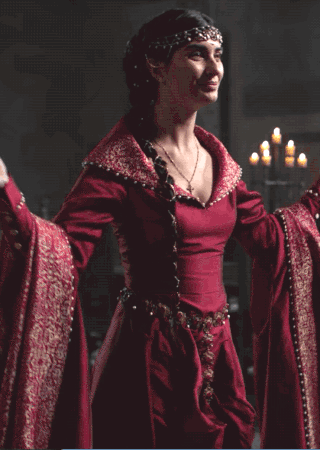
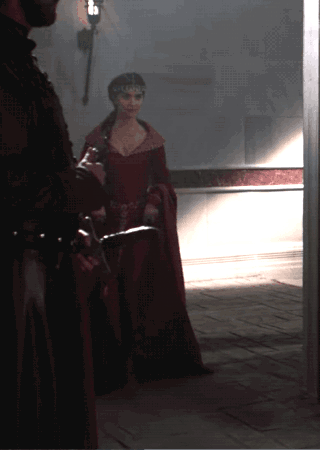

(Almost) Every Costume Per Episode + Mara Branković’s red gown in 1x06
#Rise of Empires#Rise of Empires Ottoman#Rise of Empires: Ottoman#Mara Brankovic#perioddramaedit#Mara Branković#weloveperioddrama#historical drama#perioddrama#costumeedit#costumes#costume set#costume series#costume edit#ROE 1x06#Awkward-sultana#Tuba Büyüküstün#Tuba Buyukustun#costume drama#Almost Every Costume Per Episode
109 notes
·
View notes
Text










Mit tudsz te? Murád szajhája vagy. Egy szajha!
Hunyadi (2025– )
#hunyadi#hunyadiedit#perioddramaedit#rise of the raven#törőcsik franciska#kovács tamás#mészáros martin#mara branković#stefan branković#grgur branković#legalább magyarul lehet csúnya szavakat írni a postba és a tagbe#mine#na mindegy. she.
16 notes
·
View notes
Text


This blue and golden dress was first worn by Kösem Sultan in the twenty-fourth episode of the first season of Magnificent Century: Kösem.
The dress appears again on Mara Branković in the second episode of the first season of Golden Apple: The Grand Conquest.
#Muhteşem Yüzyıl: Kösem#Magnificent Century Kösem#Magnificent Century Kosem#Kızılelma: Bir Fetih Öyküsü#Golden Apple: The Grand Conquest#period drama#costume drama#historical drama#Kösem Sultan#Kosem Sultan#Mara Branković#Mara Brankovic#reused costumes#recycled costumes
38 notes
·
View notes
Text




Rise of Empires: Ottoman + Costumes
Mara Branković's green, pink, brown & grey coat in Season 02, Episode 01 & 03.
// requested by @garnetbutterflysblog
#Rise of Empires: Ottoman#Mara Branković#Mara Brankovic#period drama#perioddramaedit#costumes#costume drama#costumesource#1400s#15th century#green#pink#brown#grey#Constantinople#Istanbul#Ottoman Empire#Hungary#Europe#requests
145 notes
·
View notes
Photo





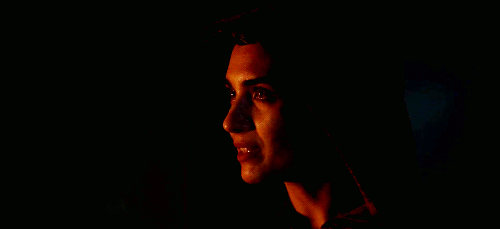
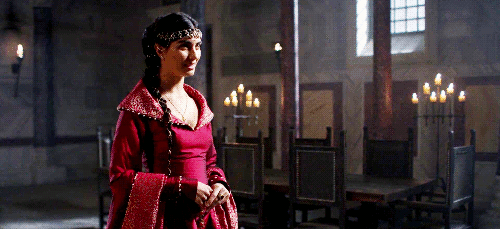
#tuba büyüküstün#tuba buyukustun#mara hatun#mara branković#mara brankovic#ottoman#history#mine#perioddramaedit#rise of empires: ottoman
266 notes
·
View notes
Photo
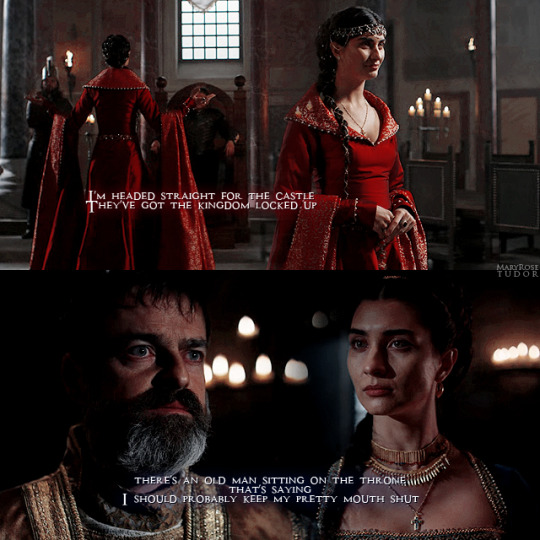
45 notes
·
View notes
Text
~Mara Branković~
Mara Brankovic, daughter of serbian despot Djuradj Brankovic and byzantine nobless Irene Kantakouzenos. She was married to Sultan Murad II. She was one of the chief personality's of the 15th century. She was also related to royal family of Constantinopole (maternal side). She was the link between slavic, greek, western and ottoman world. She was highley respected by her stepson Fatih Sultan Mehmed. He even mentioned her as "my mother" in official documents. Whole story on my YT channel!
youtube
#youtube#marabrankovic#marahatun#fatihsultanmehmed#history#serbianprincess#ottoman history#ottomanempire#serbiankingdom
12 notes
·
View notes